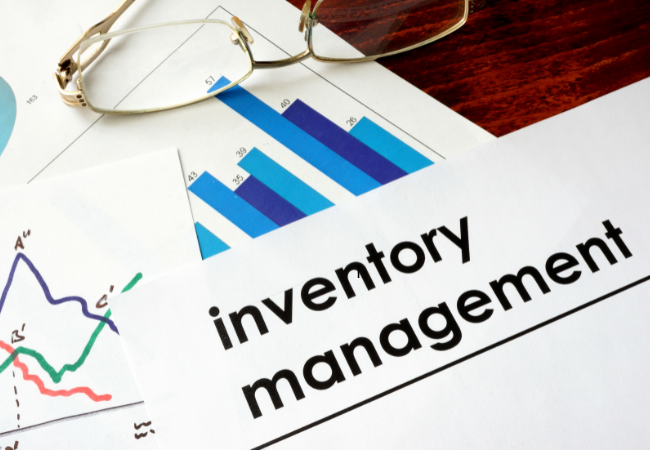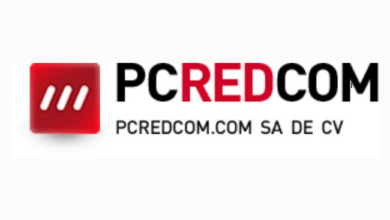What is the best inventory management software for small businesses?

Imagine a world where your business operations flow seamlessly, like a well-orchestrated symphony. Inventory management software (IMS) is the conductor that makes this harmony possible. It’s the unseen hand that ensures your products are in the right place at the right time, keeping the rhythm of your business alive and thriving. But what exactly is this powerful tool, and why is it so crucial in today’s fast-paced business landscape?
Understanding Inventory Management
Definition of Inventory Management
Inventory management is the backbone of any retail or manufacturing business. It involves tracking and managing stock levels, orders, sales, Skyware Inventory. Traditionally, this was a manual, tedious process prone to human error. However, with the advent of IMS, businesses can now automate these tasks, saving time and reducing mistakes.
Traditional Methods vs. Modern Software Solutions
Gone are the days of scribbling down inventory counts on paper or juggling multiple spreadsheets. Modern IMS offers a digital solution that is not only more efficient but also more accurate. With real-time data and automated processes, businesses can keep their inventory up-to-date and avoid costly stockouts or overstock situations.
Key Features of Inventory Management Software
Real-time Tracking
One of the standout features of IMS is real-time tracking. This allows businesses to monitor inventory levels as they change, providing an up-to-the-minute snapshot of stock availability. It ensures that you never run out of a critical item or overstock a slow-moving product.
Automated Reordering
IMS can automate the reordering process, setting trigger points for when stock levels fall below a certain threshold. This means you can rest easy knowing that the system will handle reorders, ensuring you always have enough stock on hand.
Inventory Forecasting
Forecasting tools within IMS use historical data and trends to predict future inventory needs. This helps businesses prepare for peak seasons and avoid the pitfalls of overstocking or stockouts.
Barcode Scanning
Barcode scanning simplifies the process of tracking products as they move through the supply chain. It reduces manual entry errors and speeds up the checkout process, enhancing overall efficiency.
Multi-location Management
For businesses with multiple locations, IMS offers the ability to manage inventory across various sites from a single platform. This ensures consistent stock levels and streamlined operations.
Benefits of Using Inventory Management Software
Increased Efficiency
By automating routine tasks and providing real-time data, IMS significantly boosts operational efficiency. Employees can focus on more strategic activities rather than getting bogged down with manual inventory checks.
Cost Savings
IMS helps businesses save money by reducing carrying costs, minimizing stockouts and overstock situations, and optimizing inventory turnover. It also cuts down on labor costs associated with manual inventory management.
Better Decision Making
With access to accurate, real-time data, businesses can make informed decisions about purchasing, pricing, and promotions. IMS provides insights that are crucial for strategic planning and growth.
Enhanced Customer Satisfaction
By ensuring that products are always available when customers need them, IMS improves customer satisfaction. Happy customers are more likely to return and recommend your business to others.
How Inventory Management Software Works
Integration with Existing Systems
IMS integrates seamlessly with other business systems such as accounting software, ERP, and e-commerce platforms. This ensures a smooth flow of information and reduces the risk of data silos.
User Interface and Ease of Use
A user-friendly interface is critical for the successful adoption of IMS. The software should be intuitive and easy to navigate, requiring minimal training for staff to get up to speed.
Data Analytics and Reporting
IMS provides powerful analytics and reporting tools that help businesses understand their inventory trends and performance. These insights are invaluable for making data-driven decisions.
Choosing the Right Inventory Management Software
Assessing Business Needs
Before selecting an IMS, it’s important to assess your business needs. Consider factors such as the size of your inventory, the number of locations, and the complexity of your supply chain.
Budget Considerations
IMS solutions come in a range of prices, from affordable options for small businesses to more expensive, feature-rich systems for larger enterprises. It’s crucial to choose a solution that fits your budget without compromising on essential features.
Scalability and Flexibility
As your business grows, your IMS should be able to scale with you. Look for a solution that is flexible and can adapt to your changing needs.
Vendor Reputation and Support
Choose a vendor with a strong reputation and excellent customer support. Reliable support is essential for troubleshooting issues and ensuring the smooth operation of your IMS.
Popular Inventory Management Software Solutions
Overview of Leading Software Providers
Several IMS providers stand out in the market, each offering unique features and benefits. Some of the leading names include TradeGecko, Zoho Inventory, and Cin7.
Comparison of Key Features and Pricing
When comparing IMS solutions, consider key features such as real-time tracking, automation capabilities, and integration options. Pricing can vary significantly, so it’s important to choose a solution that offers good value for money.
Implementing Inventory Management Software
Steps to Successful Implementation
Implementing an IMS requires careful planning and execution. Start by mapping out your inventory processes and identifying any pain points. Then, work with your vendor to configure the software to meet your specific needs.
Training and Support for Staff
Proper training is crucial for ensuring that your staff can use the IMS effectively. Provide comprehensive training sessions and ongoing support to help them get the most out of the software.
Common Challenges and How to Overcome Them
Implementation can come with challenges such as resistance to change and technical issues. Address these by communicating the benefits of IMS to your team and working closely with your vendor to resolve any technical problems.
Case Studies
Success Stories from Various Industries
Many businesses across different industries have successfully implemented IMS. For example, a retail chain reduced stockouts by 30% and increased sales by 15% after adopting an IMS.
Lessons Learned
These success stories highlight the importance of choosing the right IMS, providing adequate training, and continuously monitoring and optimizing your inventory processes.
Future Trends in Inventory Management Software
AI and Machine Learning
AI and machine learning are transforming IMS by providing more accurate forecasting and automating complex tasks. These technologies will continue to evolve, offering even greater efficiency and insights.
IoT Integration
The Internet of Things (IoT) is enabling real-time tracking of inventory through connected devices. This technology will further enhance the accuracy and efficiency of IMS.
Blockchain Technology
Blockchain technology offers secure, transparent tracking of products through the supply chain. This can help reduce fraud and improve traceability.
Conclusion
In the symphony of modern business, inventory management software is the conductor that ensures every note is played perfectly. It brings order, efficiency, and harmony to your operations, helping you stay ahead in a competitive landscape. By choosing the right IMS and implementing it effectively, you can unlock significant benefits and drive your business toward success.
FAQs
What is the best inventory management software for small businesses?
The best IMS for small businesses often includes solutions like Zoho Inventory or TradeGecko, which offer affordable pricing and essential features tailored for smaller operations.
How can inventory management software improve customer satisfaction?
IMS ensures that products are always available when customers need them, reducing stockouts and delays. This leads to happier customers and increased loyalty.
Is inventory management software expensive?
The cost of IMS varies, but there are options available for all budgets. Many providers offer tiered pricing plans, allowing businesses to choose a plan that fits their needs and budget.
Can inventory management software integrate with other business systems?
Yes, most IMS solutions can integrate with other business systems such as accounting software, ERP, and e-commerce platforms, ensuring a seamless flow of information.
What are the common challenges in using inventory management software?
Common challenges include resistance to change from staff, technical issues during implementation, and the need for ongoing training. These can be overcome with proper planning, support, and communication.



